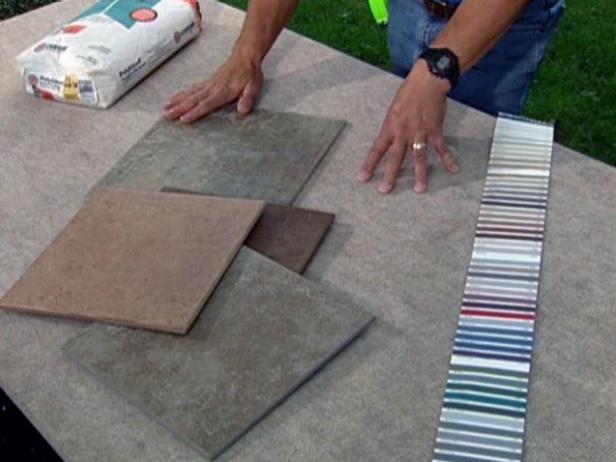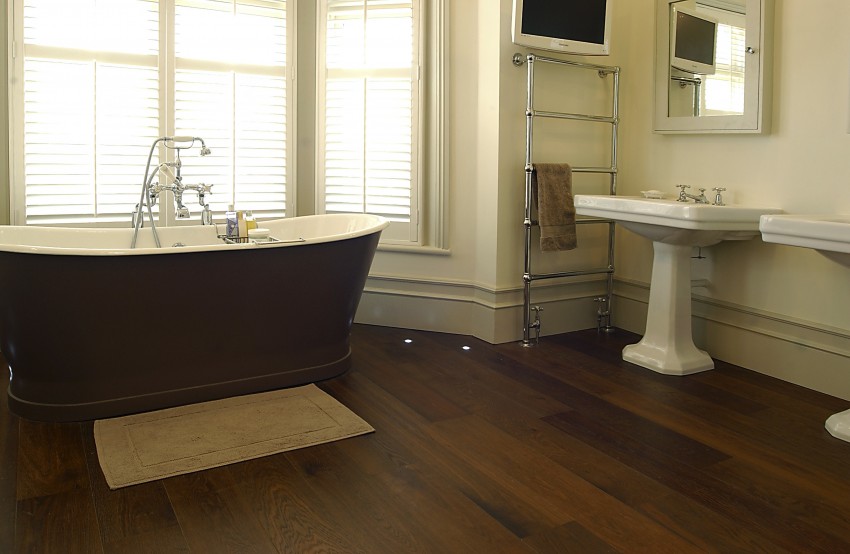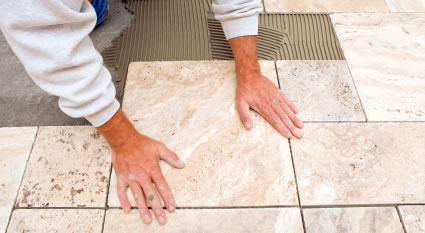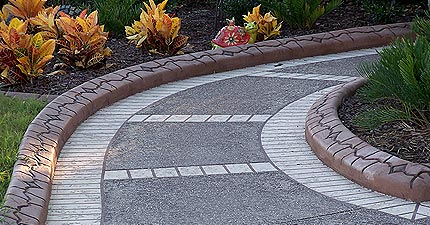Installing tile is an extremely labor-intensive project that can give the amateur do-it-yourselfer a backache and a few headaches, but in the end the work will all be worthwhile. While it certainly can be done without hiring a contractor, doing everything properly is essential to the success of the final result; therefore, it is strongly advised to at least talk with a contractor experienced in laying cement tile. Done right, a cement tile floor makes a dramatic statement and will last for many years to come. Cement tiles are durable, beautiful and easy care to care for.
If installing cement tile in new construction, it is best to wait until construction is completely finished before proceeding, because the tile is extremely porous before sealing and any stains from the construction process or dirty footprints will be difficult to remove.

Tiles should be stored in a dry area before installation. If the boxes get wet there is a possibility for tiles to be stained or damaged, in addition, tiles should be allowed to become acclimated to the environment for several days before installation.
If tiles are to be installed on a concrete slab, it is necessary to allow the concrete to dry completely to avoid problems with efflorescence, which is created when moisture from the concrete slab evaporates through the cement tiles and leaves behind a powdery deposit.
Cement tiles should never be installed on an uncured concrete surface for the same reason. In some cases, even properly sealed concrete floors will continue to release moisture. In this case, the slab will have to be waterproofed before the tile can be installed.
To ensure the best result, the surface to be tiled must be level. If the floor is uneven, the tiles will not sit flush. Check the floor with a straightedge and fill in any low spots with thin-set. If a larger area needs to be leveled, use a self-leveling compound and spread over the entire surface to be tiled for a smooth base.
The tiles around the edge of the room will have to be cut which can cause chips; therefore, it is strongly advised to remove all baseboards before beginning to lay the tile. It makes cutting tiles quicker because any imperfections will be hidden by the baseboards.
Another labor-saving preparation is to install guide boards along the edges of the room, these take the place of chalk lines and allow faster and more precise setting of the second and subsequent rows and ensures the tile floor will be square. Screw the guide boards in place, making sure they are 100 percent straight, then simply butt the first row of tile against the board. Wrap the edges in duct tape to prevent the thin-set from adhering to the board.
A high-quality thin-set adhesive should be used following the manufacturer’s specifications. Keep in mind, cement tiles are not installed using large quantities of water like other types of tile, and it is also not recommended to install cement tiles during extremely hot and humid days or in full sun.
For best results, ensure a strong bond by applying adhesive to the back of each tile as well as spreading adhesive on the floor, giving 100 percent coverage. Tiles must be leveled as they are laid to avoid problems further into the installation. Rubber mallets or hammers cannot be used on these tiles. Cement tiles should be placed and leveled with hand pressure only to avoid cracking or otherwise damaging the tile.
Because the tiles are handmade, there are slight color variations in each tile; therefore, the best result is achieved when mixing tiles from different boxes during the initial layout. For the same reason, the best results are achieved when all the tile for a project is ordered at the same time. Tiles ordered and made at a later date may not blend well with the existing tile.
When laying tiles, excess adhesive should be wiped with a damp sponge while wet to avoid staining. Cuts should be made using a diamond blade wet saw to avoid chipped edges. Tape should not be used on the surface of the tile during installation as it can discolor some of the lighter shades of tile. Using white or light-colored grout is recommended; if darker grout is desired, for best results it should be no darker than the lightest shade in the tiles.
Tiles must be sealed after being laid and before grouting to prevent staining the tiles with grout. An impregnating or penetrating sealer should be used to completely block staining. Two or three days between laying tile and applying grout is advised.
Applying grout should be done in small sections to avoid premature drying. Should grout applied to the tiles begin to dry too soon, it is imperative to remove immediately. If grout is allowed to harden on the tile it will be extremely difficult to remove; for this reason grout is not spread over the entire floor as in other tile installation. Once installation is finished, any residue should be removed right away.
Cement tiles come in dozens of patterns and colors, can be customized for a one of a kind look, and adds both beauty and value to a home. Installing a tile floor is an effort well spent.






